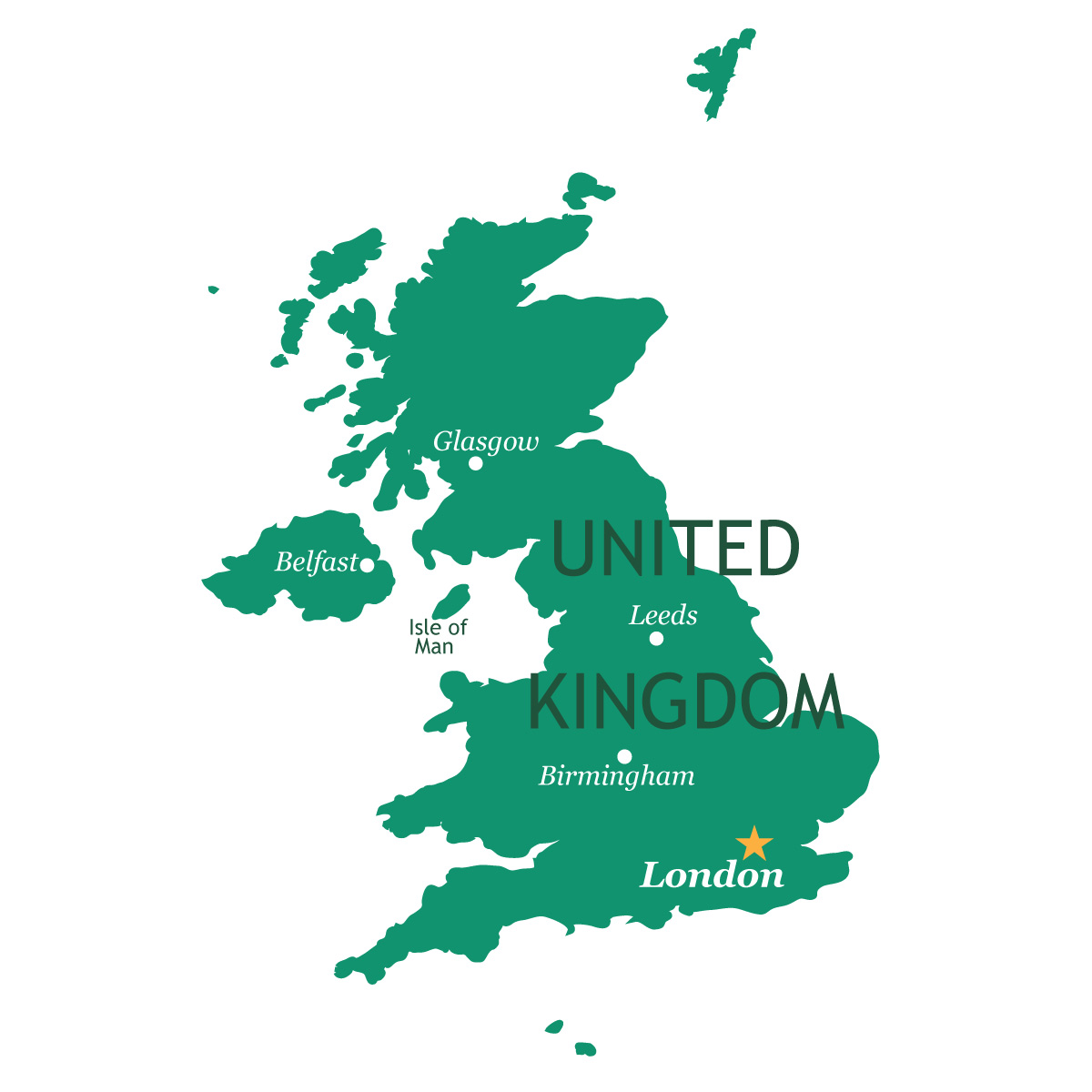
United Kingdom
Located off of Europe’s western coast, the United Kingdom comprises the island of Great Britain (including England, Wales, and Scotland) and the northern tip of Ireland. Grab your kids and let’s learn some facts about the United Kingdom!
QUICK STATS

To the north west of Europe’s peninsula. Bordered by the Atlantic Ocean to the north, North Sea to the east, the English Channel to the south, and Ireland to the west.
A brief history to learn about the United Kingdom
The United Kingdom is made up of four countries. Each has its own history that ties into the history of the United Kingdom. Let’s dive into the history of each of the four.
A brief history of Scotland
Located in the northern part of Great Britain, the first people to settle in the land that is now Scotland arrived in about 3000 BC. Celts from Central Europe and France migrated to the area about 700 BC, and they largely ruled the region for hundreds of years.
The British island was invaded by the Roman Empire in 59 AD. However, the Roman army was unable to conquer fierce tribes known as Caledonians living in the northern region (which is now Scotland).
In the 400s AD, tribes from Ireland called Scots arrived in the region, and large family groups from these tribes, called clans, ruled the various regions of the land for many years.
These clans became united in the 800s to form the Kingdom of Scotland.
In the 1200s, when the line of succession to the Scottish throne was broken, king Edward I of England saw an opportunity to invade Scotland and bring it under British rule.
After years of unrest and rebellion against the British, Scotland was declared officially independent in the year 1320.
Because of the intermarriage of many royal families in the era, in 1603 the same young monarch, James VI succeeded the thrones of both Britain and Scotland.
In 1707, the Act of Union followed, creating a single parliament to govern the two countries.
Though Scotland also reconvened its own parliament in 1999, it remains part of the United Kingdom to the present day.

Brief History of Wales
Around 700 BC, Celtic tribes began to migrate to the area to the west of the island of Great Britain, which is now Wales.
The Roman Empire invaded and conquered the majority of the British Isle in 59 AD, and ruled until approximately 400 AD. Afterward, the region was divided into several Celtic kingdoms, which were eventually united under Llywelyn ap Gruffudd, the only king to rule all of Wales.
After Llywelyn’s death in 1282, Edward I of England conquered the small nation.
Then, after many unsuccessful Welsh rebellions – most notably those led by Oweain Glynwr – Wales was officially annexed into England in 1536 under Henry VIII.
Wales joined the United Kingdom in 1801.
In 1999, a National Assembly for Wales was formed, taking control over many things previously under the authority of the Parliament in London.
Brief History of England
Located to the south and east of Great Britain.
The first people to arrive on British soil migrated to the region about 3000 BC. These early people completed the structure known as Stonehenge around 2000 BC.
The Celtic tribes who inhabited the region from approximately 700 BC were conquered by the invading Roman Empire in 59 AD, and the Roman province of Britannia was created.
After the fall of the Roman Empire around 400 AD, the British islands were left without a strong government or organized defense, making them vulnerable to invaders. They were invaded by Vikings, Saxons, and then Normans, who began their ruling line of British monarchs with William I in 1066.
The English first conquered Wales in 1282. Then in 1536, King Henry VIII of England declared himself king of Wales and Ireland.
Beginning in the 1500s, the English deployed ships to other continents to establish colonial rule.
In 1603, the Scottish and British crowns were united, creating the United Kingdom. And in 1800 the Act of Union merged the Kingdoms of Great Britain and Ireland.
By the dawn of the 1800s, the British Empire became the largest and most powerful force in Europe.
However, over the next hundred years, many of the colonies gained their independence, and the British became embroiled in conflicts on many fronts. This, coupled with the loss of colonial revenue, quickly took a toll on the military and economic power of the British.
By the conclusion of World War II, the government of England remained solely united with Ireland, Wales, and Scotland.
Today, England is the location of the central government of the United Kingdom.
A brief history of Northern Ireland
For the early history of the island of Ireland, see our country page on Ireland.
Located on the northern tip of Ireland, Northern Ireland became a separate entity in 1921. Those in this region were called unionists, who wanted to retain a union with Great Britain when the rest of Ireland desired to rule themselves.
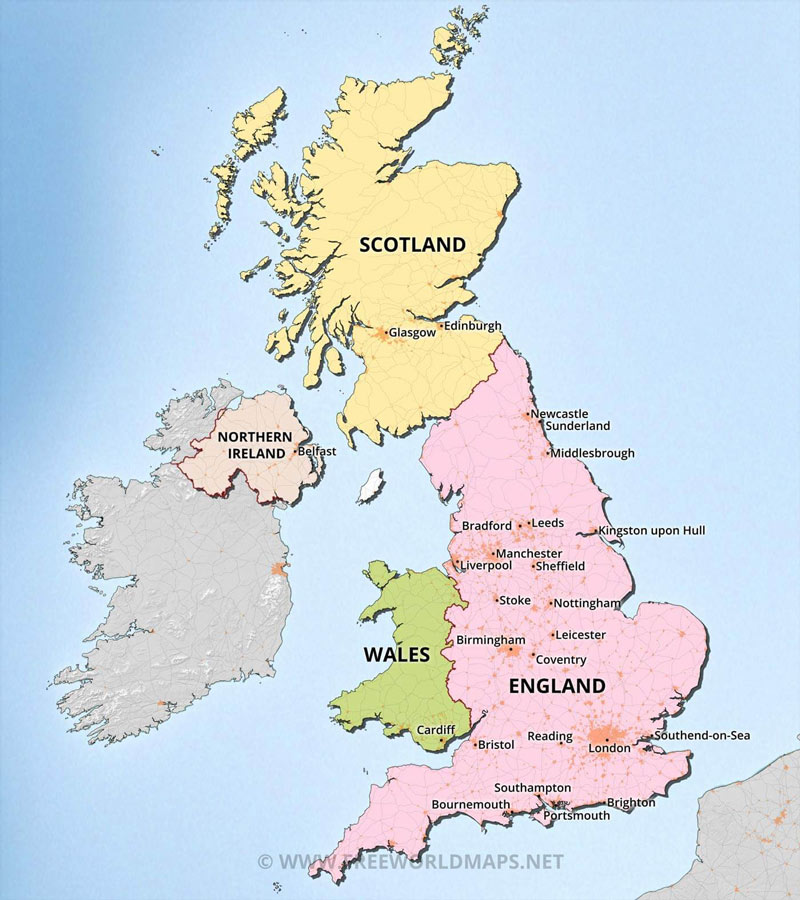
Fun facts about the United Kingdom for kids
- The first postage stamp was designed in Britain in 1840. It featured an image of Queen Victoria.
- England is home to Stonehenge, which historians estimate to be the oldest monument in the world.
- The city of London is home to 8 million people from a wide range of cultural and ethnic backgrounds. Nearly 300 languages are spoken by the various people groups living within city limits.
Food in the United Kingdom
The cuisine of the United Kingdom is a blend of regional dishes from the four nations, and the flavors and traditions of the many peoples who have inhabited the islands.
The expansion of global trade during the Age of Exploration brought new flavors and cooking techniques to these islands, such as spices from India, sausages from Germany, and bananas, sugar, and even potatoes from the Americas.
The history of the UK and the rich variety of cultural influences have made British and Northern Irish cuisine what it is today.
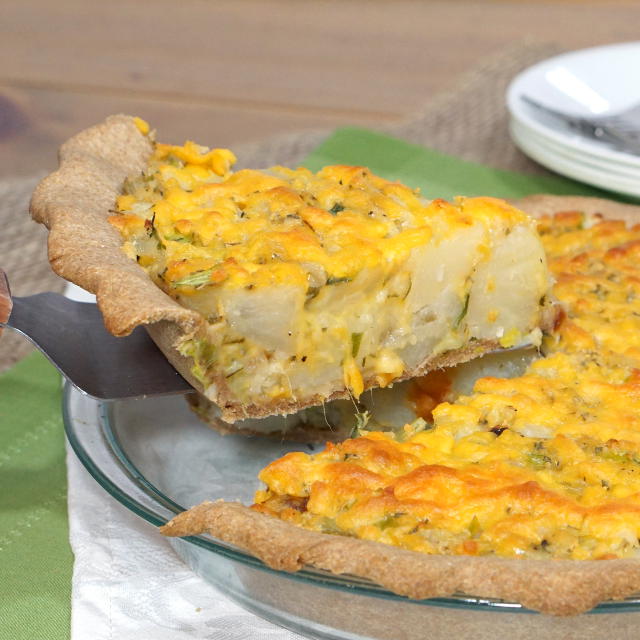
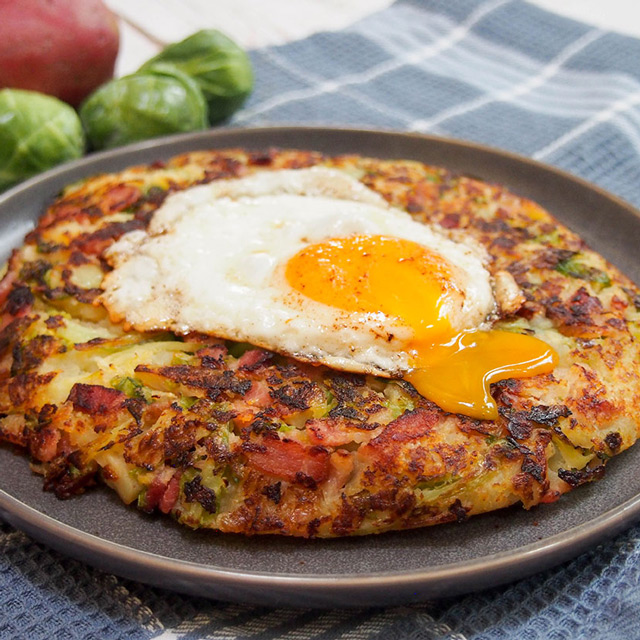

Meals in the United Kingdom. What do the people eat?
In the UK, people typically eat three meals a day. During the work or school week, people often eat breakfast, lunch, and dinner on the go. Convenience meals from the supermarket or fast-food chain are common for many busy families.
But while quick, modern meals have replaced many traditional favorites and home-cooked staples, many people still make time for a warm, family meal on Sunday afternoons. They call this meal the Sunday Roast, and it is slow-cooked and eaten together around the table.
Breakfast
In the UK, people often eat breakfast around 7:30 to 9:00 am.
Many people eat breakfast cereals like Corn Flakes or hot cereals called porridge during colder months.
On weekends, people will often make a big breakfast later in the morning. Depending on your location it may be a Traditional English Breakfast (Full English Fry-up), Ulster Fry, Full Scottish Breakfast, or Traditional Welsh Breakfast. These plates are similar, with slight differences between regions, and often consist of different types of sausages, eggs, bacon, beans, bread, and fried vegetables.
Lunch
During the week, most working people and students pack a lunch, usually consisting of a sandwich.
Though England’s own Earl of Sandwich is the namesake of the popular food, most people in the UK refer to it as a sarnie. Favorites are cheese with pickles, beef with horseradish, and prawns with mayonnaise.
During the winter, baked potatoes with butter and sour cream, known as jacket potatoes, are a common simple lunch, as well as a bowl of soup.
Leek and potato soup and the hearty oxtail stew are traditional soups. Another is Scotch broth, made of broth stock with barley, carrots, and sometimes other vegetables.
Dinner
Dinner in the UK takes place around 6 pm. This is usually a warm meal since cold and wet weather is common on the islands.
Favorite dinner dishes are roasted meats like chicken, beef, or pork. People often serve the meat with vegetables and a hot brown gravy made from the juices of the meat.
People also combine these ingredients into various dishes. An example of this is shepherd’s pie, which is an oven-baked casserole of minced lamb (or beef in the case of cottage pie), vegetables, and gravy under a layer of mashed potatoes.
Another traditional favorite is toad in a hole. In this dish, a row of pork sausages are baked in a flour-based batter and served with gravy, carrots, and peas.

Food etiquette in the United Kingdom
When invited to dinner in the UK, one should be as punctual as possible, arriving within half an hour of the time stated on the invitation.
The host seats the ladies first and the men second. The most honored position is at the head of the table.
The meal begins once the host begins eating, generally after everyone has been served.
Diners hold the knife in the right hand and the fork in the left. And they pass the dishes to the left.
When one is not eating, hands are to remain in the lap. One must not reach for a dish but ask for someone to pass it.
Upon finishing a meal, one of the dinner guests will often make a toast to the host and also to the queen.
Food in the United Kingdom by region
Because of the proximity of the four countries, you find many similar dishes shared between the regions. However, there are some recipes that have deep roots in each of the individual heritages.
If you’re learning about the United Kingdom with kids, trying a few dishes from each country may be fun. Many are very kid-friendly! Here are some facts and dishes for each.
Scotland
Scottish traditional fare is an important part of the history and culture of the country. Scotch pies, double-crusted meat pies, are popular meals. These are the subject of the annual World Scotch Pie Championship.
Scottish porridge is also unique to the region. Unlike its counterparts elsewhere in the UK, Scottish porridge is made with salt instead of sugar.
Perhaps the most famous Scottish dish, however, is haggis, a sausage made with the organs of sheep, oatmeal, and various herbs. (Try this simplified version of haggis, made with easy-to-find ingredients.)
Northern Ireland
Dishes native to Ireland are filling foods to keep warm in a cold climate.
The Irish classic, soda bread, takes a slightly different appearance in the North in the form of farl, a simple soda bread cooked in a skillet.
Another Northern Irish favorite is champ, a hot dish of mashed potatoes, spring onions, and butter, as well as boxty, potato pancakes.
Barmbrack is another traditional favorite. This sweet bread contains dried fruit and is common during Halloween celebrations.
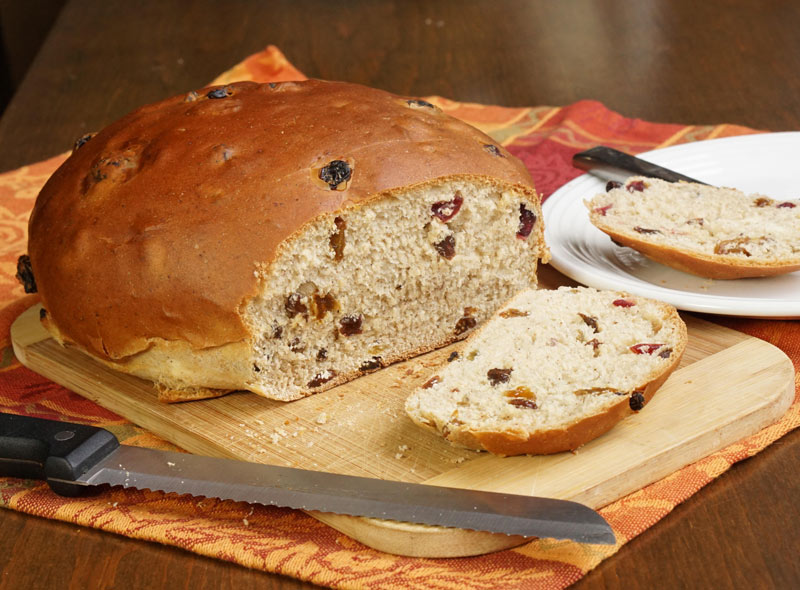
Wales
Traditional Welsh dishes are often simple yet unique recipes, handed down through generations.
Welsh rarebit is a national favorite, made of a dense, toasted bread covered in cheese sauce.
Welsh cawl is also a crowd-pleaser. Cooks make this lamb stew with onions, parsnips, leeks, and carrots.
On the coast, a famous dish is laver bread, seaweed found along the west coast of the UK, served spread on toast.
England
Yorkshire pudding can be made as small pastries cooked in a special muffin-like tray or baked in a larger pan and sliced. Either way, they are baked in hot oil and served with any roast meal. While originating in England, you find them across the UK now.
Cornish pasty originated as a hand-held lunch for miners in the Devon and Cornwall mines. These hand-pies are full of minced beef and potatoes.
Fish and chips is a classic on the coast of England. The breaded and fried fish are typically served with French fries and mushy peas.
Scones and clotted cream are a classic for afternoon tea.
Sticky toffee pudding, one of England’s favorite desserts. It is a sponge cake and chopped dates topped in a toffee sauce, often served with vanilla ice cream.
Eton mess, a fun summery dessert, perfect for kids to help make, made with strawberries, meringue, and whipped cream.
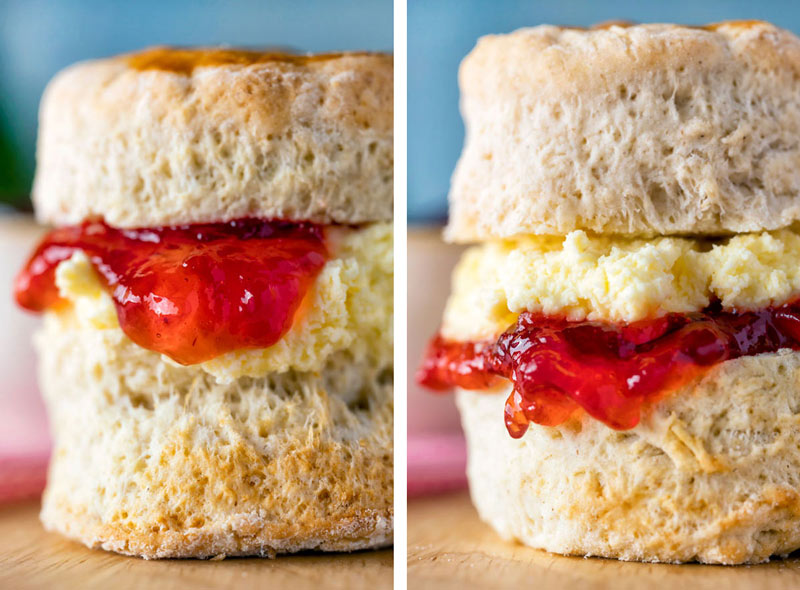
Holidays in the United Kingdom
Discussing holidays is a great way for kids to learn about the United Kingdom.
Some holidays people across the United Kingdom celebrate, like Easter, Christmas, and Boxing Day (the day after Christmas). However, there are also some holidays and traditions that are more popular in one region of the United Kingdom or another.
When learning about the United Kingdom with kids, you may want to look at more globally popular holidays or more country-specific ones.
We have given you a few of the country-specific holidays below that you may or may not be familiar with.
Hogmanay (Scottish New Year’s Eve, December 31)
In Scotland, the most well-known holiday is Hogmanay, the Scottish people’s New Year’s Eve celebration.
Traditionally the Scottish people celebrated Hogmanay on the shortest day of the year. This is because Hogmanay’s origins predate the Roman conquest and thus the arrival of the Roman and Gregorian calendars. However, many modern-day celebrations have moved to December 31.
A popular tradition called “first footing” is to visit friends and neighbors in the early hours of the morning, bringing gifts of shortbread and coal. They believe these gifts will bring the family good luck in the coming year.
People also sing Auld Lang Syne, written by Robert Burns of Scotland, have bonfires, and set off fireworks as a part of the festive celebration.
For dinner, steak pie is the traditional dish of Hogmanay. Cooks make this savory dish with steak, turnips, and mashed potatoes.
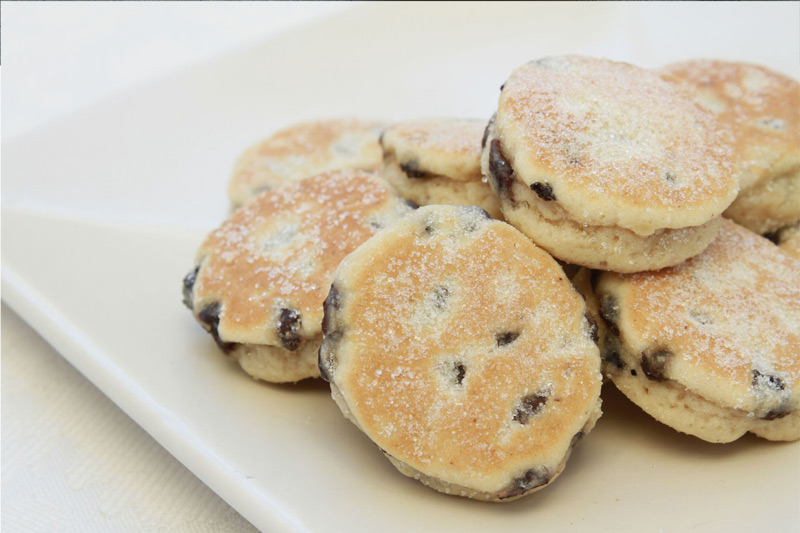
St David’s Day (Wales, March 1)
In the early 6th century, St. David, grandson to the King of Ceredigion, preached the Gospel of Jesus Christ throughout much of Wales. St. David established many churches and monasteries throughout the country. He was a beloved Saint among the Welsh for many years, even after his death.
His impact on the nation makes St. David’s feast day a celebration of Welsh pride. People wear daffodils pinned to their collars. Children wear traditional Welsh clothing. And the people celebrate with parades and folk dances.
People celebrate with traditional sweet breads like Welsh cakes (griddle-cooked sweet bread rounds with dried fruit) and Bara brith (a type of fruit cake soaked in tea). For dinner, they may enjoy cawl (meat and vegetable stew), or Glamorgan sausages (vegetarian hand-rolled sausages made with cheese and leeks)
St George’s Day (England, April 23rd)
St. George’s festival is the day commemorating the life of the patron saint of England.
Born in Turkey in the late 3rd century, St. George was a Roman soldier who came to faith in Christ and spoke out against the persecution of Christians under the Roman Empire. Because of this, the Romans imprisoned, tortured, and executed him.
The legend of St. George involves the young soldier slaying a dragon in a mythical village after it had eaten all the young maidens except the king’s daughter. Every year, plays and parades depicting the story take place all over England.
People wear red roses in their lapels and fly red cross flags along the streets.
It is a day of English pride, with many traditional English favorites like Sunday Roast served in kitchens, pubs, and restaurants.
Another popular treat on St. George’s Day is Yorkshire pudding.
St Stephen’s Day (Ireland, December 26th)
St. Stephen was the first Christian martyr. Much of Western Europe remembers him on the day he died by stoning.
In Ireland, legend has it that a wren betrayed St. Stephen as he hid from his enemies in a cave, giving away his position. For hundreds of years, children hunted for wrens, killed them, and tied them to sticks to parade around town.
Today, that tradition has died out and people celebrate with church services, plays, parades, and of course St. Stephen’s Day pie, made of turkey, ham, bacon, and vegetables.
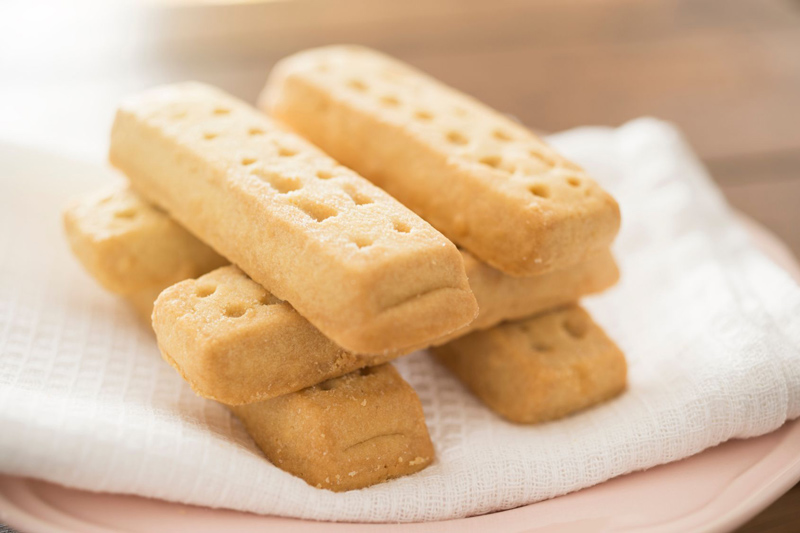
At-home ideas for kids to learn about the United Kingdom
As a part of your homeschool United Kingdom unit study or as a supplement to your child’s United Kingdom unit at school, try some of these ideas at home!
- Find a colorful book telling the tale of St George and the dragon. Make your own shields with St George’s red cross. And pick one of the English dishes we mention to try for your celebration.
- Celebrate Halloween with Irish barmbrack bread.
- Try making Scottish shortbread cookies, they are popular for a tea time snack or for giving as gifts.
- Try planting daffodils or making a daffodil craft to celebrate Wales for St. David’s Day. Make some Welsh rarebit (cheese-covered toast) or another Welsh recipe we mention above for the celebration.
- Take a virtual tour of Stonehenge. Make your own replicas with building blocks, bricks or stones, or even hot dog buns.

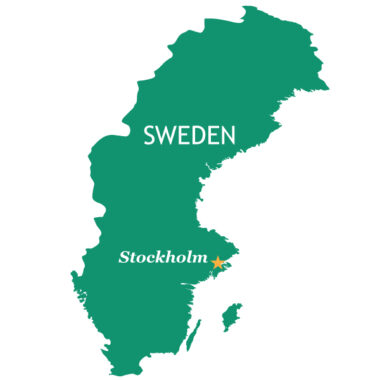
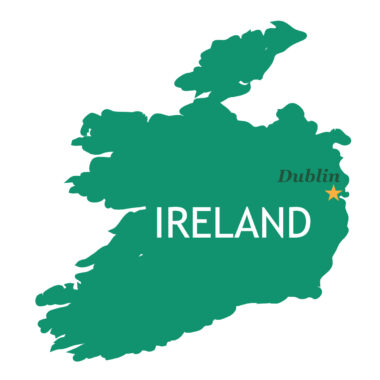
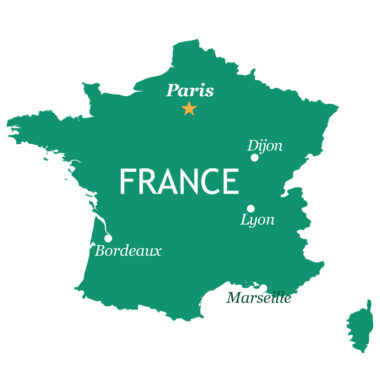


Have a Question/Comment?